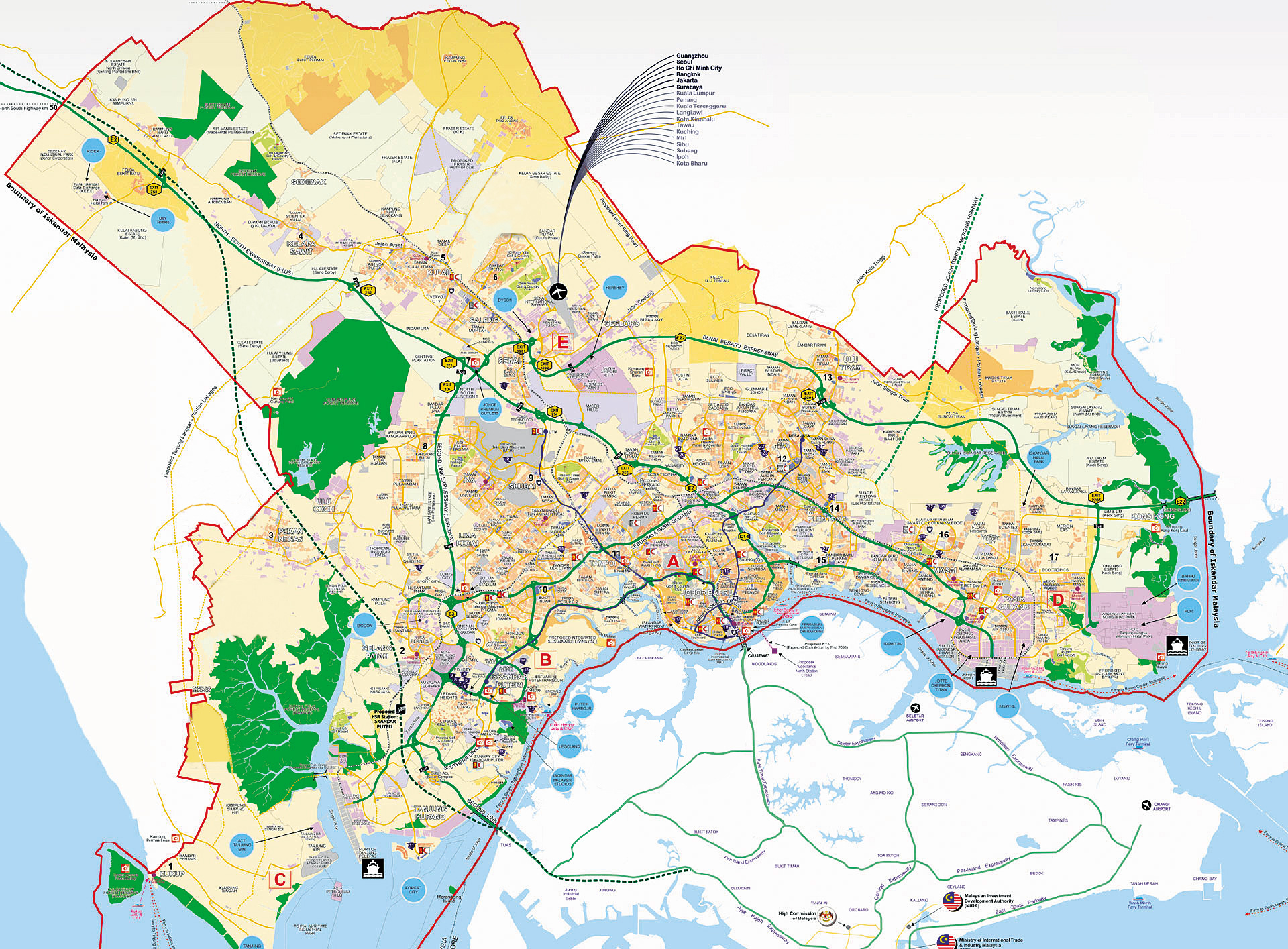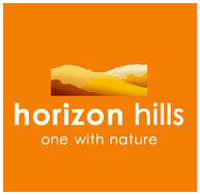ISKANDAR MALAYSIA, which was conceptualised as an economic growth corridor in 2006, encompasses an area of 2,217 sq km across Johor, or about three times the size of Singapore and two times the size of Hong Kong. Described as a logistics triangle, it has the Senai International Airport to the north, Port of Tanjung Pelepas to the west and Johor Port to the east.
The region is poised to become the economic growth engine that will reshape Johor’s landscape. More importantly, it is being developed into an international metropolis for business, innovation and sustainable living. The nine promoted economic sectors in Iskandar Malaysia are financial; logistics; education; tourism; creative; healthcare; electrical and electronics; petrochemical, oil and gas; and food and agro processing.
Property, however, is not a promoted economic sector. Nevertheless, with more local and foreign investors setting foot in Iskandar Malaysia, the various infrastructure and real estate developments will be among the highest contributors to the cumulative recorded investments.
According to the latest available data from Iskandar Regional Development Authority (IRDA), the property sector contributed a total investment of RM196 billion between 2006 and 2022 versus the total recorded investment of RM409.5 billion in Iskandar Malaysia, where mixed-use developments, residential properties and industrial real estate contributed RM103.3 billion, RM72 billion and RM20.7 billion respectively.
Iskandar Malaysia has come a long way in terms of economic development, infrastructure growth, investment inflows, job creation and overall improvement in quality of life since its inception in 2006. The region has witnessed many developments, including the establishment of industrial parks, commercial centres, townships and infrastructure enhancements, attracting both domestic and foreign direct investments and contributing to economic growth, job creation and urban development, particularly in the region’s central business district — Iskandar Puteri.
The region’s crown jewel
Iskandar Puteri, previously known as Nusajaya, is the largest urban integrated development in Iskandar Malaysia and Southeast Asia. It comprises 24,000 acres of signature catalytic developments aligned with identified sectors and industries under the 10th Malaysia Plan, such as Kota Iskandar, Puteri Harbour, Educity, Afiat Healthpark, Medini CBD, Legoland Malaysia, Gleneagles Hospital and the Southern Industrial and Logistics Clusters.
As the winner of The Best Masterplan Award at the Fiabci Prix d’Excellence Awards 2012, Iskandar Puteri has become a hub of business activities and one of the most sought-after addresses in the region, all thanks to the fact that it is located between the Malaysia-Singapore Second Link and Johor-Singapore Causeway, which never fails to attract both local and foreign homebuyers, particularly those who travel between the two countries daily for work.
Apart from the meticulous master planning and strategic location of Iskandar Puteri, the ongoing infrastructure projects in Iskandar Malaysia and Johor — such as the Johor Bahru-Singapore Rapid Transit System (RTS) and Electrified Double Track Project (EDTP) as well as the potential revival of the Kuala Lumpur-Singapore high-speed rail (HSR) project — are expected to further improve connectivity in the state as well as accessibility for commuters, tourists and businesses, facilitating cross-border trade and investment that, in turn, will help stimulate the local residential property market.

In addition, the recently announced Johor-Singapore special economic zone (JS-SEZ), which is set to be established within Iskandar Malaysia, is expected to foster further cross-border trade and investment. It will push Johor’s economy to greater heights, benefiting all economic sectors, particularly the real estate industry, which has been stagnant due to oversupply and the Covid-19 pandemic in the last few years.
Reviewing the performance of Johor’s property industry, CBRE | WTW director Jonathan Lo describes it as a “mixed bag”. Nevertheless, one thing that is certain is that these townships, with their well-developed infrastructure and well-thought-out masterplans, have been performing well despite the overall slowdown in the market.
“They include townships such as Horizon Hills, which has flourished over the years, resulting in increased property values and demand for residential properties in the region,” he comments.
Where excellence meets opportunity
Spanning 1,228 acres in the heart of Iskandar Puteri, Horizon Hills is the pioneer township in the region. The ongoing development is being jointly curated by renowned property developer Gamuda Land, the property arm of Gamuda Bhd, and UEM Sunrise Bhd since 2007. It has a total gross development value (GDV) of RM7 billion.
The township has unfolded over 11 carefully curated development phases, featuring 6,000 low-density residential units, a private golf course, a mall, a public school, a clubhouse and 150 acres of themed parks, gardens and plazas.
Currently, about 70% of the township has a thriving community with a diverse population, of which 60% of the residents are Malaysians, while Singaporeans make up 28%. The remaining 12% consists of expatriates from countries such as Australia, China, Indonesia, Japan, South Korea and the UK.
It is worth noting that about 70% of the homes at Horizon Hills are occupied by the owners and a substantial number of them commute across the Causeway daily. Another 20% use their property there as a weekend home, while the remaining 10% are investors.
Singapore’s real estate cooling measures are also contributing to the outstanding transaction and price growth in well-planned townships like Horizon Hills.
“The impact of Singapore’s cooling measures presents an opportunity to attract Singaporean investors and homebuyers seeking more affordable housing options across the border, which is reflected in the uptrend in rental and transaction prices,” Lo notes.
The recently released The Edge Malaysia | KGV International Property Consultants Johor Bahru Housing Property Monitor 4Q2023 showed that the rental rate in Horizon Hills has increased since last year. Double-storey terraced houses and semi-detached homes saw a quarter-on-quarter increase to RM2,500 and RM3,500 per month respectively, indicating the market’s growing appetite for high-quality landed homes in strategic and well-developed neighbourhoods in the region. It is also evidenced by the record sales at some of Horizon Hills’ latest products, including Mansion18, Morrinsville, Horizon Square and KingsWood.
Mansion18 offers 3-storey bungalows priced from RM4.5 million, Morrinsville features double-storey link homes priced from RM1.1 million and Horizon Square offers 2- and 3-storey shopoffices priced from RM1.5 million. All three projects saw brisk sales upon their launch last year.
In January, Horizon Hills introduced another upscale product called KingsWood that offers 2-storey (built-ups from 3,273 sq ft) and 3-storey cluster homes (built-ups from 4,406 sq ft) priced from RM1.6 million and RM1.9 million respectively. Although the overall property market was focused on the affordable range, this product speaks for itself, with 90% of the units sold within three months.
As more good news is brewing in Iskandar Malaysia, such as the proposed initiatives to enhance the liveability and sustainability of the region to a global standard, including Smart City Iskandar Malaysia, Low Carbon Society Blueprint and the introduction of the Comprehensive Assessment System for Built Environment Efficiency (CASBEE), the region is paving the way for a resilient and prosperous future, while achieving its goal of becoming a sustainable and liveable international metropolis.



